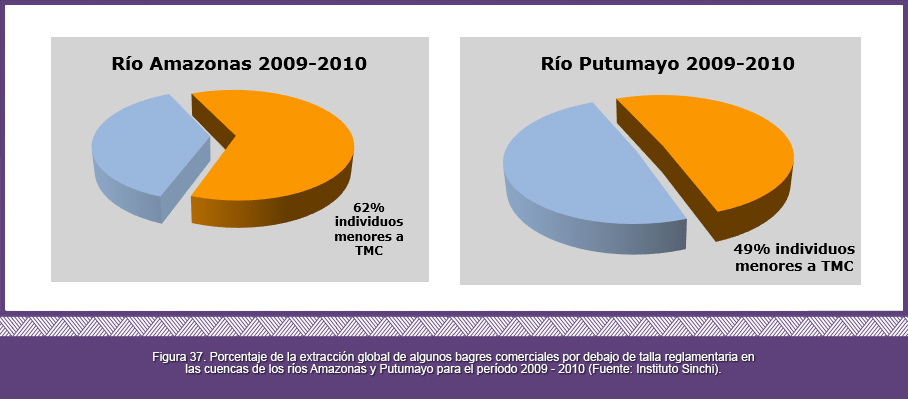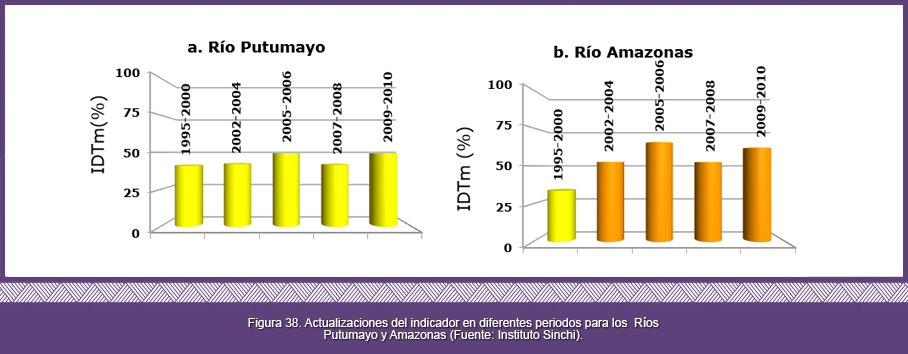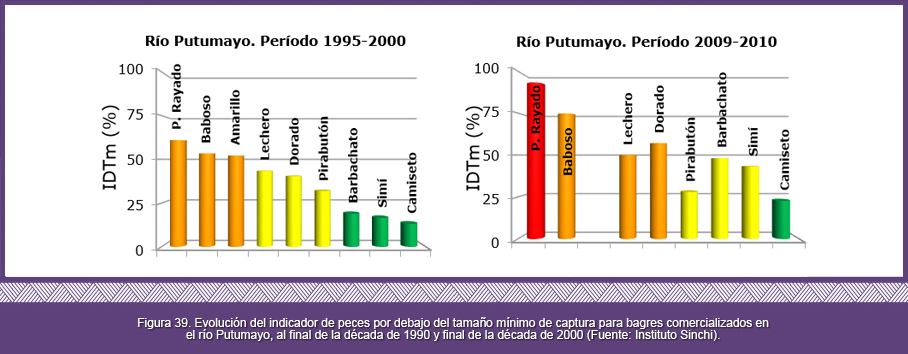This update of the indicator showed alarming results for the Putumayo and Amazon basins. There was a strong negative impact of fishing on the Amazon River that went from 33% in 2000 to 62% in 2010, which places it in the category of high resource affectation. While in the Putumayo basin, the values have gone from 31 to 49%, leaving the resource in the same degree of affectation as the Amazon (Figure 37).

Upon reviewing the different updates of the indicator, there was an increase nearing 50% in the negative rating of the indicator for the Putumayo River; while the Amazon River fluctuations that have already occurred have exceeded that 50% (Figure 38). It is important to remember that the aggregation of the different species is generating this high global value for each region and they depend on, either the selectivity of the arts or the moment in which they are applied based on the hydrological regime of the rivers.

On this update, 8 species of catfish in the Putumayo river and 9 species for the Amazon were able to be analyzed. In both cases the Pintadillos (Pseudoplatystoma spp.) were the species that contributed to increase the alarms in the indicator to the extent that they are a resource of high commercialization, for which, there is no respect on behalf of the users regarding the regulated size of catch. (Figure 39 and Figure 40).

It should be noted that Calophysus macropterus (Simi) is a species that has been consolidated in the national catfish trade, with annual increases since 1998. Its high demand in the domestic market (as a replacement for the Capaz del Magdalena), has led to a greater extraction and therefore a negative evolution of the size indicator for the evaluated period for both regions. The same is happening with Pinirampus pirinampu (Barbachato), a species similar in size to Simi, whose negative impact also increased, as the number of individuals caught below the landing size increased.

With the present update of the size indicator, it can be concluded and reiterated that given the socio-economic importance of fish and fisheries in the Amazon, the immediate processes of fishery management should lead to a consensual adjustment of the allowed catch sizes, in conjunction with the especification of the gear that can be used in fishing. In addition, an efficient participation and sensibilization of the fishing authorities should be added to this problem, so that a felt reduction of the negative impact that the current capture methodologies in the Colombian Amazonian region already cause on fish is achieved.